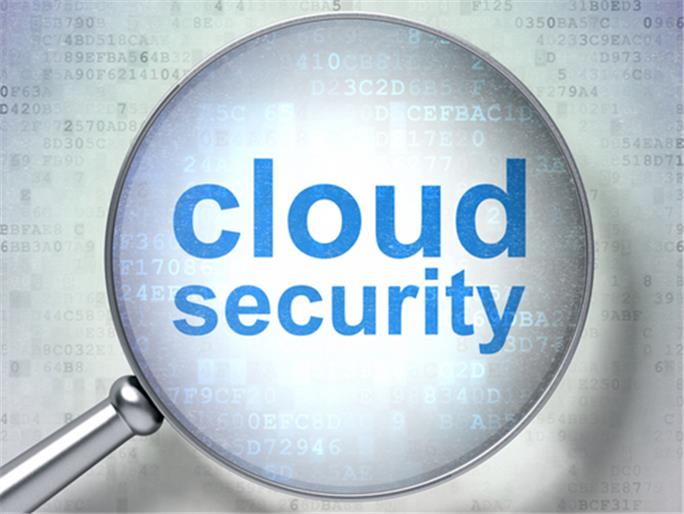2025 Cybersecurity Trends: What’s Ahead?
By Alex Carter on September 23, 2024
Cybersecurity adapts to emerging threats and advancing technology. To stay protected, organizations must adapt to new risks and strengthen security measures. As cloud computing, AI security, and connected devices grow, cybercriminals refine their tactics, demanding constant updates.
In 2025, ransomware, data breaches, and state-sponsored attacks remain key threats. Strong authentication, advanced threat detection, and compliance with security regulations are crucial for risk reduction.

What are Cyber Security Trends?
Cybersecurity trends reflect threats, attack methods, and defense strategies shaped by technology and global events. As digital reliance grows, financial and communication networks face greater risks. Organizations must adapt to stay secure. In 2025, protecting data and critical systems will remain a priority, with targeted attacks on key infrastructure continuing to pose challenges.
Adapting to these evolving cybersecurity trends requires a proactive approach, and understanding how to keep up with technology is essential for staying ahead of emerging threats.
Why Tracking Cybersecurity Trends is Essential
Following advancements in cybersecurity is crucial to avoiding monetary loss and harm to one’s reputation. Outdated defenses are vulnerable to AI-driven assaults and social engineering techniques as cyber threats change. There is a greater chance of breaches that impair operations and undermine trust if new threats are ignored.
Cybercriminals constantly refine their strategies, making continuous monitoring a necessity. Here’s why staying updated is crucial:
- Sophisticated Attacks – Fileless malware and multi-stage threats bypass traditional security. Zero-trust models and behavioral analytics strengthen protection;
- Protecting Reputation – Data breaches undermine customer trust and cause legal consequences. Strong security safeguards brand credibility;
- Regulatory Compliance – Adhering to GDPR, HIPAA, and other regulations prevents penalties and ensures data security;
- Remote Work Vulnerabilities – Phishing and data leaks require advanced endpoint security and strict access controls;
- Financial Consequences – Cyber incidents lead to costly disruptions, but proactive security reduces recovery expenses;
- Managing System Weaknesses – Regular updates and monitoring close security gaps before attackers exploit them.
10 Cybersecurity Trends to Watch in 2025
AI-Driven Malware Threats
In order to make detection more difficult, cybercriminals are employing machine learning to create malware that is constantly changing its code. Thus, it may evade sandboxing, circumvent conventional security controls, and adjust to endpoint protections. AI-powered attacks render manual threat detection ineffective, pushing organizations toward anomaly detection and automated security solutions. Zero-day exploits enhanced by AI remain a critical cybersecurity concern.
Adopting Zero Trust Security
With traditional perimeter security becoming less reliable, zero trust has emerged as a leading defense strategy. Unlike older models, this approach mandates continuous authentication and verification, restricting access even after initial login. Zero trust reduces the severity of breaches by preventing lateral mobility within networks. Micro-segmentation, real-time user monitoring, and rigorous access rules are helping businesses improve security.
The Encryption Challenge of Quantum Computing
Although quantum computing is still in its early stages, it presents a future threat to encryption standards. Cybercriminals and state-backed entities may already be storing encrypted data, anticipating that quantum advancements will eventually break current protocols. To counter this risk, businesses are exploring quantum-resistant encryption. Early implementation of post-quantum encryption solutions is necessary to safeguard sensitive data against future decoding capabilities.
The Rise of Ransomware-as-a-Service (RaaS)
Even people with less technical expertise may now launch ransomware attacks because to the growth of Ransomware-as-a-Service (RaaS). Cybercriminals now sell ready-made ransomware tools, which has resulted in a significant increase in assaults and financial losses. The average recovery cost for each occurrence surpasses $2.73 million. Businesses are increasing security by using offline backups, segmenting networks, and introducing enhanced endpoint protection.

Security Risks in 5G and Edge Computing
The expansion of 5G networks is driving greater connectivity but also introducing new security challenges. As more data is processed at the edge, devices handling critical operations are becoming prime targets for cyberattacks. Compromised 5G infrastructure and edge computing systems could impact industries like healthcare, logistics, and consumer technology. To safeguard these systems, organizations must enforce strict identity verification, perform regular firmware updates, and implement continuous monitoring.
Growing Insider Threats in Remote and Hybrid Work
Intentional and unintentional insider attacks have become more likely due to remote and hybrid work styles. Cloud misconfigurations made by employees might disclose private information, and malicious individuals could steal important company data. Businesses are using data loss prevention technologies and behavioral analytics to identify suspicious activity and stop illegal access in order to solve this problem.
Rising Threat of Supply Chain Attacks
Third-party providers are being targeted by hackers in an attempt to simultaneously compromise several businesses. Widespread effects are emphasized by well-known breaches, such as the SolarWinds attack. Businesses are strengthening vendor security, keeping an eye on external connections, and carrying out comprehensive security evaluations prior to onboarding vendors in order to reduce risks.
Security Risks in Cloud Containers
While cloud computing enhances scalability and efficiency, containerized environments present significant security vulnerabilities. Misconfigurations and outdated container images create openings for cyberattacks. If one container is breached, attackers could infiltrate broader network systems. Strengthening security within DevOps workflows and conducting regular vulnerability assessments are essential steps in protecting cloud infrastructure.
Deepfake Social Engineering Scams
With the use of sophisticated deepfake technology, fraudsters may produce lifelike audio and video impersonations of public figures, workers, and executives. Victims are tricked into divulging private information or approving financial transactions by use of these false recordings. Due to the widespread use of video conferencing, businesses need to implement multi-step verification processes and train staff members to spot deepfake frauds.
Integrating IT and OT Security
Operational technology (OT) systems, once isolated from IT networks, are now merging as industries adopt data-driven operations. While this integration enhances efficiency, it also introduces security vulnerabilities. Cybercriminals can exploit weaknesses in OT systems to disrupt production or compromise critical infrastructure. To address these risks, businesses must implement unified security monitoring and enforce strict protection measures across both IT and OT environments.
Cyber threats in 2025 require businesses to take a proactive approach. AI-driven attacks and weaknesses in emerging technologies pose significant risks, making strong security frameworks and strict access controls essential. Organizations that invest in cybersecurity awareness, deploy advanced protection solutions, and stay informed on industry trends will be better prepared to defend against evolving threats.
Cybersecurity Trends Across Industries
Different industries face unique cybersecurity risks based on their data sensitivity and network structures. While threats like ransomware and zero-day exploits impact all sectors, specific industries must address distinct vulnerabilities. Below are key cybersecurity trends shaping different sectors in 2025.
- Healthcare: Hospitals handle sensitive patient data, making them prime ransomware targets. Data breaches cost $9.77M per incident (2022-2024). HIPAA compliance, encryption, and zero-trust security are essential;
- Financial Services: Banks and fintech firms face phishing, fraud, and account takeovers. PCI DSS compliance requires AI fraud detection, MFA, and micro-segmentation for security;
- Retail & E-Commerce: Retailers risk credential stuffing, supply chain attacks, and card skimming. WAFs, DevSecOps, and real-time fraud detection help secure transactions and PCI DSS compliance;
- Government & Public Sector: Government agencies store personal data, making them targets for credential theft and service disruption. Zero-trust security, endpoint monitoring, and staff training mitigate risks;
- Manufacturing & Industrial IoT: Factories with automation and connected devices face cyber threats that disrupt production. Security improvements include OT security software, network segmentation, and patch management.
Barriers to Adopting New Cybersecurity Measures

Implementing cybersecurity measures comes with challenges. Budget constraints force companies to weigh breach risks against upfront security costs. A shortage of experts further slows the adoption of AI-driven detection, zero-trust models, and other advanced security strategies. Some organizations turn to managed security services and staff training to bridge this gap.
Managing security across multi-cloud platforms like AWS and Azure is challenging due to inconsistent policies and threat monitoring. Employee resistance, especially to measures like multi-factor authentication, adds to the difficulty. Without leadership support and clear communication, security protocols may be overlooked.
Data privacy concerns also play a role in cybersecurity adoption. Businesses frequently need to anonymize or aggregate data in order to avoid conflicts between real-time threat detection, compliance requirements, and employee privacy rights. Upgrades are challenging without interfering with corporate operations since many businesses still use outdated systems that lack contemporary security measures.
Overcoming these challenges requires leadership buy-in, ongoing workforce training, and collaboration with security vendors to ensure that cybersecurity measures are effectively implemented and maintained.
Practical Applications of Cybersecurity Trends
Understanding cybersecurity trends is one thing—effectively applying them is another. Organizations must integrate modern security measures into daily operations. Below are six key ways these trends are being implemented:
- AI for Threat Detection: AI-enhanced threat hunting accelerates log analysis, detects anomalies, and allows security teams to focus on complex threats, reducing breach costs;
- Automated Patch Management: Automating security updates across systems and applications minimizes vulnerabilities, reducing human error and improving response times;
- Secure-by-Design Development: Embedding security into product development ensures fewer vulnerabilities reach production, streamlining compliance and reducing long-term costs;
- Real-Time Encryption & Micro-Segmentation: Isolating resources and encrypting data prevents lateral movement by attackers, enhancing security in multi-cloud environments;
- Advanced Identity & Access Management: Moving beyond passwords, organizations use biometric authentication, risk-based access controls, and continuous session validation to reduce insider threats;
- SOC Automation: Automating security operations improves response times by handling tasks like IP blacklisting and event correlation, freeing analysts to focus on advanced threats.
Applying these trends ensures stronger security, better risk management, and improved regulatory compliance.
Adapting to Cybersecurity Challenges in 2025
Staying ahead of cybersecurity threats in 2025 requires a strategic approach that combines advanced defenses, employee training, and resilience planning. With adversaries using AI-driven attacks, supply chain vulnerabilities, and targeted malware, a reactive approach is no longer sufficient.
Organizations can stay prepared by taking six essential actions to boost cybersecurity protection. Effective management of changing risks requires proactive identification, cross-team cooperation, and ongoing process improvement.
Ongoing Risk Assessments
As threats change, regular evaluations of attack surfaces are necessary. Implement scheduled vulnerability scans, penetration testing, and configuration reviews to identify and address the most pressing security gaps. This approach ensures that organizations focus on current threats rather than reacting after an incident.
Strengthening Security Awareness
Technology alone cannot prevent phishing attacks or poor password practices. Employees should receive regular training on secure practices, including phishing drills and password management policies. Encouraging security awareness through engagement strategies helps create a workforce that actively identifies and reports threats.
Enhancing Cloud Security Management
Cloud environments require consistent security policies. Establish data ownership rules, enforce encryption, and implement multi-factor authentication across cloud platforms. Centralized log monitoring enables organizations to detect and respond to anomalies in multi-cloud or hybrid setups, ensuring compliance and reducing risks.
Using Threat Intelligence
No single organization can track every emerging cyber threat. By participating in industry collaborations and sharing threat intelligence, security teams can identify and mitigate risks more efficiently. Integrating automated threat feed ingestion with internal analytics strengthens early detection capabilities.
Strengthening Incident Response Preparedness
A well-structured incident response (IR) plan minimizes disruption during cyberattacks. Develop and test response procedures for various threats, including ransomware and supply chain breaches. Conduct mock exercises to ensure staff, security tools, and external partners can work together effectively when an attack occurs.
Focusing on Continuous Improvement
Cybersecurity requires ongoing adaptation to new threats and technologies. Evaluate emerging solutions such as quantum-safe cryptography and advanced user behavior analytics. Updating security architecture and addressing skill gaps ensures organizations remain resilient against increasingly sophisticated attacks.
Conclusion
Cybersecurity threats are constantly changing, requiring businesses to stay informed and take proactive steps. As ransomware, data breaches, and AI-driven attacks become more advanced, strong authentication, improved threat detection, and compliance with security regulations remain necessary. Organizations that track cybersecurity trends and adjust their security strategies are better prepared to prevent threats and reduce financial and reputational risks. Ongoing investment in security technologies, employee training, and regulatory compliance will be required to manage cybersecurity risks in 2025 and beyond.
Posted in blog, Monitoring
Alex Carter
Alex Carter is a cybersecurity enthusiast and tech writer with a passion for online privacy, website performance, and digital security. With years of experience in web monitoring and threat prevention, Alex simplifies complex topics to help businesses and developers safeguard their online presence. When not exploring the latest in cybersecurity, Alex enjoys testing new tech tools and sharing insights on best practices for a secure web.
Web & Cloud
Monitoring
